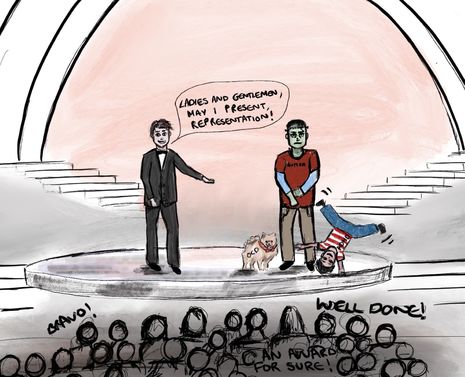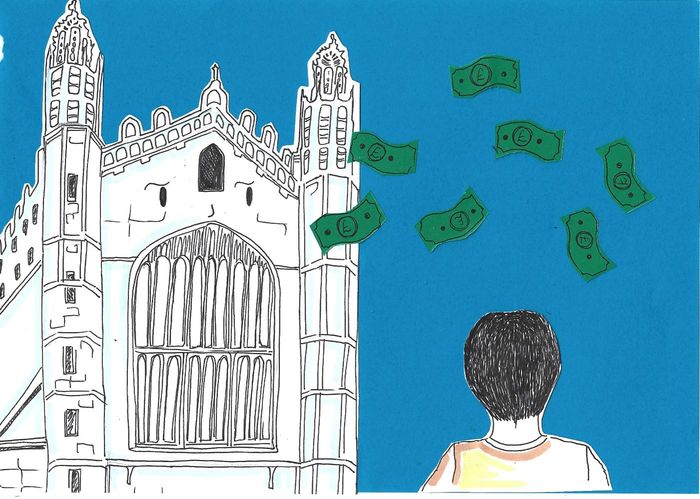The media has neurodiversity wrong. We must rethink representation.
With a plethora of under-researched, stereotyped neurodiverse characters in the media, Ellie Wilson and Miranda Stephenson argue that ‘representation’ based on stigma does far more harm than good

If we asked you to sit back and think of an autistic character, who would it be? Sheldon Cooper, right? Someone like that. Skinny, white, and definitely male. Highly intelligent in a mathematical kind of way – and anyone who loves STEM that much has got to be asexual. He is always ready with a sass-laden dismissal of any situation which might call for social skills, a characteristic which is played for laughs.
There’s no disputing that Sheldon was the most popular character in The Big Bang Τheory, so much so that actor Jim Parsons’ exit from the show effectively brought it to its end. But it’s equally undeniable that everyone’s favourite socially-awkward scientist falls into every autistic trope in the book.
Like a child who doesn’t quite understand the grown-up world yet, Sheldon gets away with things that other characters cannot. He is misogynistic, telling one female character that she should abandon her work with high-energy particles in favour of ‘laundry and child-bearing’. In another episode, ‘The Champagne Reflection’, he ostensibly films a tribute to George Washington Carver whilst made-up in blackface. Although individual characters might point out that this is an issue, Sheldon’s problematic behaviour is rarely directly addressed. Because after all, he’s autistic. He can’t help it - right?
“To wave away misogynistic comments, racism, or worse is to imply that autism is little more than an explanation for bad behaviour.”
The fact is that there is nothing inevitable about Sheldon’s behaviour. Autism does not automatically make people unaccountable for their actions; it does not inevitably lead to social blindness, offensive comments and an uncaring attitude towards others. Anyone is capable of insensitive behaviour, whether they are neurodiverse or not. To wave away misogynistic comments, racism, or worse is to imply that autism is little more than an explanation for bad behaviour; it reinforces stereotypes and isolates neurodiverse people from their identity, sometimes leading to a rejection of a diagnosis that could help their mental wellbeing.
Autistic people can be highly sociable and empathetic; they can struggle academically and long for relationships. There is no single autistic poster child fighting the good fight for media representation, because there is simply no possible way one character could represent the numerous iterations in which autism can present itself.
Perhaps, in a way, it is Sheldon’s popularity that is the problem.
‘Representation’ in the media has become something of a tick-box exercise. If a show plans on appealing to the widest masses, it needs a black character, a gay character, a neurodiverse character, and so on and so on ad infinitum. What seems to matter less is the amount of research which goes into building said minority characters: in the case of neurodiverse characters, there’s a tendency to follow the popular, proven, Shelodonic model, churning out savant after savant without any attempt to represent autism in any more nuanced light. Unfortunately, even when an effort is made to show other faces of autism – Sia’s 2021 film Music focuses on a non-verbal girl – research proves just as jaw-gnashingly minimal.
“Having one presentation of autism does not give you a universal understanding of every other autistic person’s experience.”
Music met backlash for Maddie Ziegler’s portrayal of an autistic protagonist: a performance which proved to be a soulless, offensive mockery of certain autistic behaviours. The debate surrounding the film largely focused on whether or not a neurotypical actor should ever play a neurodivergent character. But, even had an autistic actress taken on the role, having one presentation of autism does not give you a universal understanding of every other autistic person’s experience. An autistic lead actress would never have magically absolved the film of its deeply problematic core.
Music is a shaky, bait-y tower with foundations of shallow research, advocating the use of potentially lethal prone restraint and substituting garishly cartoonish dance-breaks for real reflection on the autistic main character’s inner world. If anything, an autistic lead actress might have been taken as tacit neurodivergent approval for such a dangerous and inaccurate portrayal of autism. Without the basis of a properly researched character, the casting of an autistic actress would have done more harm than good.
Nor is it just autism that suffers from endemic pigeon-holing and misrepresentation. Other neurodiversities are often glossed over, or even treated as ‘cute’. They’re trivial, something that anyone can ‘have a bit of’, as if you can select the symptoms of your neurodiversity from a carefully curated list – but only the nice ones. Glee’s Emma Pillsbury springs to mind as a borderline hate-crime in cutesy pastel clothing, whose obsessive-compulsive rituals (that is to say, daintily polishing the grapes in her lunchbox) magically dissolve once she starts dating the charismatic Spanish teacher, Will Schuster.
“But perhaps ADHD should thank its lucky stars that it hasn’t yet gone the way of OCD, appropriated for innumerate charming slogans which poke fun at neurodiversity.”
These trivialising media stereotypes of neurodivergent behaviour seem to ooze into the real world: surely we have all heard someone loudly announce, “Wow, I am so OCD!” while lining up the pencils on their desk, not thinking twice about it. Meanwhile, the disruptive, hyperactive boy who used to throw rubbers at your primary school teacher is often the only presentation anyone can see of ADHD. “He’ll grow out of it,” the teaching assistant says, “It’s just boys being boys.” She doesn’t know to add that ADHD is a neurodevelopmental disorder which affects females as well as males, spanning from childhood into old age; ADHD is a condition rarely featured in the media at all.
But perhaps ADHD should thank its lucky stars that it hasn’t yet gone the way of OCD, appropriated for innumerate charming slogans which poke fun at neurodiversity. In a particularly vivid example from early secondary school, a friend of ours bought a shirt that advertised her ‘Obsessive Cumberbatch Disorder.’
The popularity of these one-dimensional, non-representative and often offensive portrayals of neurodiversity can lead to dismissal or lack of understanding of the various ways in which these conditions present themselves. Outcomes of neurodiversity are exactly as you would expect: diverse. As such, when the media slaps a hollow-eyed, mass-produced rendition of a neurodiverse character into a movie, calls it ‘representation’ and sits smugly waiting for awards season to roll around, such characters are no more than paper-thin exploitations of the stigma and stereotypes attached to neurodiversity.
Currently, the best examples of neurodiverse characters are those without ‘autistic’ or ‘ADHD’ or ‘OCD’ tossed into the character description for the actor to interpret. When it comes to perfecting a well-rounded neurodiverse character, these descriptions are essentially useless on their own and make it far too easy to fall into common tropes. This is why characters who inadvertently come across as neurodiverse without the baggage which currently accompanies the label - such as Eddie Redmayne in Fantastic Beasts - are far more effective and relatable than those which scream ‘representation’ in name alone.
Indeed, as the masses take up the battle cry of “Representation!”, it is worth asking ourselves whether the current state of ‘representation’ will build anything more than a higher platform for harmful stereotypes and stigma surrounding neurodiversity. Rather than regurgitating badly researched tropes, the media can benefit the neurodivergent community most by expanding the range of its neurodiverse narratives – for when an empathetic autistic woman can sit up alongside Sheldon Cooper in the television halls of fame, we’ll know that real progress has been made at last.
 Interviews / You don’t need to peak at Cambridge, says Robin Harding31 December 2025
Interviews / You don’t need to peak at Cambridge, says Robin Harding31 December 2025 Comment / What happened to men at Cambridge?31 December 2025
Comment / What happened to men at Cambridge?31 December 2025 News / Unions protest handling of redundancies at Epidemiology Unit30 December 2025
News / Unions protest handling of redundancies at Epidemiology Unit30 December 2025 Features / ‘Treated like we’re incompetent’: ents officers on college micromanagement30 December 2025
Features / ‘Treated like we’re incompetent’: ents officers on college micromanagement30 December 2025 News / Varsity’s biggest stories of 202531 December 2025
News / Varsity’s biggest stories of 202531 December 2025










